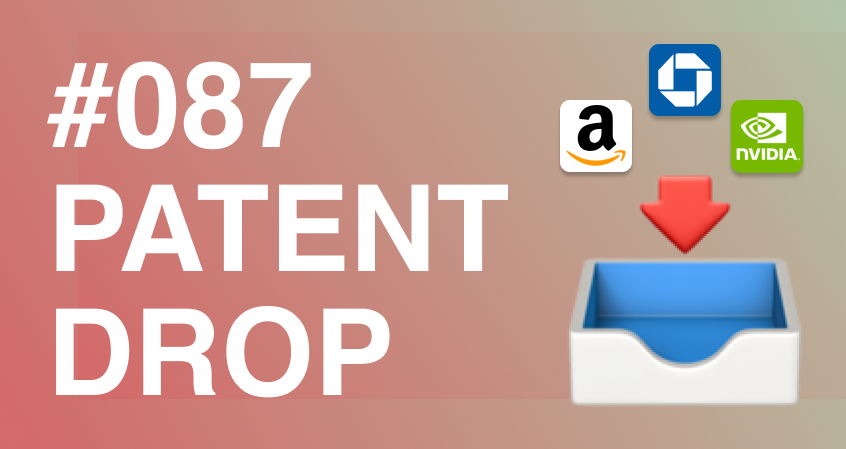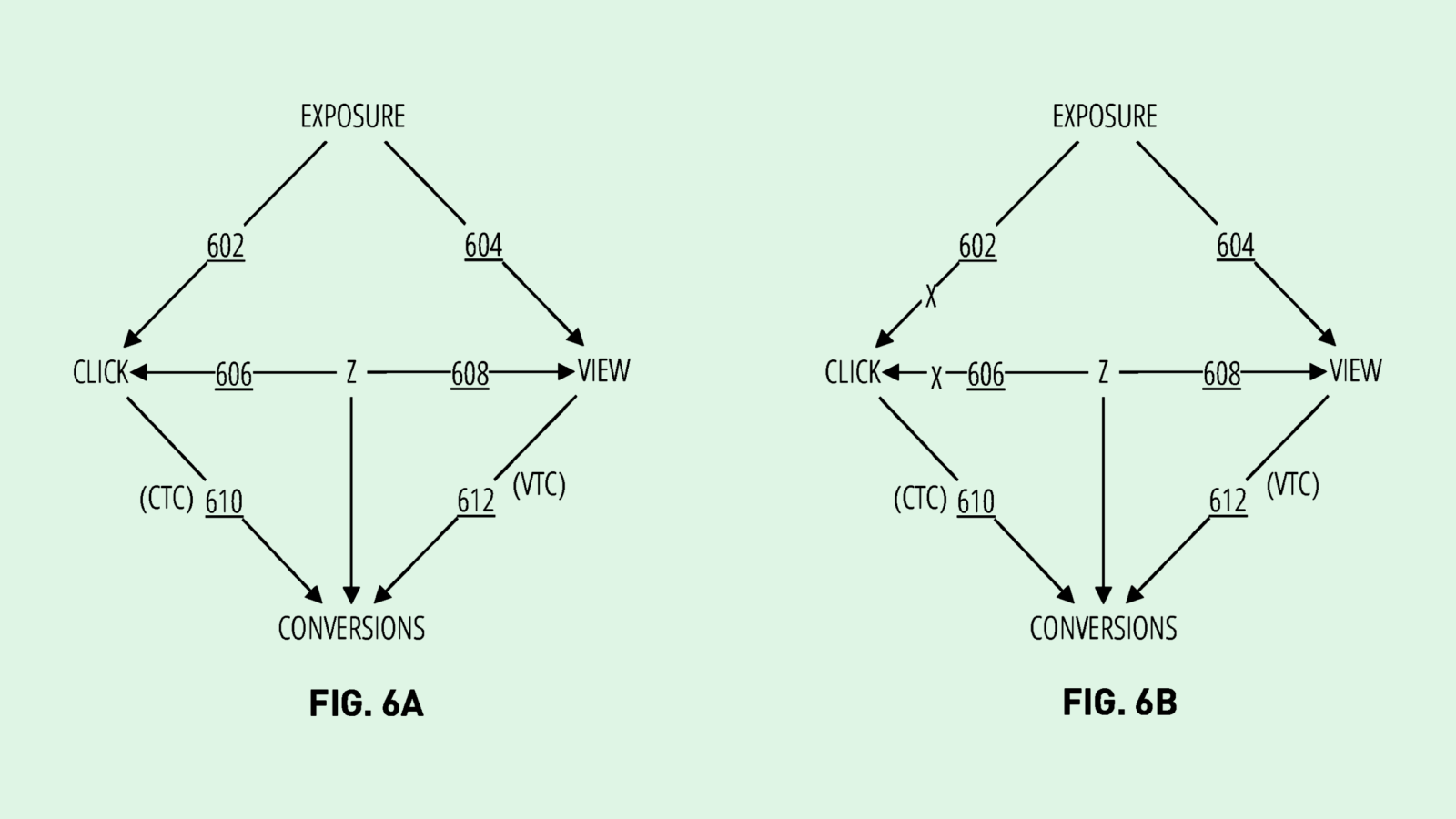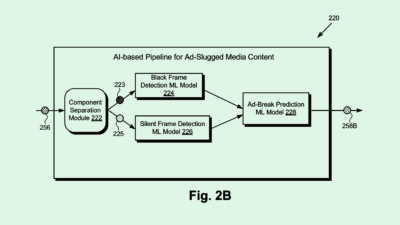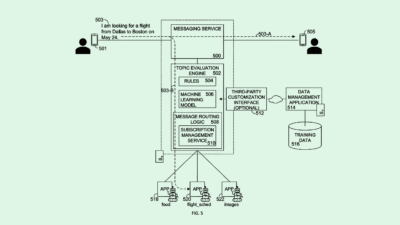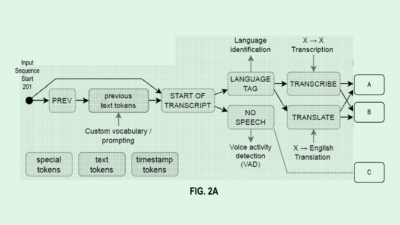Sign up to uncover the latest in emerging technology.
Plus: Nvidia’s factory settings; Amazon’s machine learning for everyone
Happy Thursday and welcome to Patent Drop!
Today, we’re checking out tech from JP Morgan that uses AI to recruit candidates, Nvidia’s plan to apply the shrewd eye of a neural network to manufacturing, and Amazon’s goal to make machine learning accessible to anyone.
And a quick programming note: Patent Drop is taking a break on Monday, May 8. We will be back on our regular schedule on Thursday, May 11.
Drum roll, please!
#1. Chase’s automated recruiter
JP Morgan Chase wants to let AI find its talent.
The US’ largest (and now even larger) bank is seeking to patent a method for using machine learning to find candidates for jobs. Essentially, this tech uses “employee public data,” such as their internal or external network, to identify candidates and generate a “confidence score” for that potential recruit. This score indicates how closely connected the candidate might be with the current employee, how easy or difficult it may be to recruit that candidate, and whether or not that candidate is a good fit for the job.
Once this system identifies a good recruit, it will generate a “targeted recruitment communication” to reach out to them and monitor their application and employment status. Given that this system is based on machine learning, the tech monitors how well of a job it did at finding optimal candidates, whether they got hired and if they stick around, learning and improving from previous experiences.
JP Morgan noted that this tech mitigates the issues of outside recruitment teams not understanding the culture of a company, and therefore not being able to identify candidates that will last long as employees.
“Identifying and recruiting new employees is an important part of any organization,” JP Morgan said in the filing. “Finding employees with values and goals that are in-line with an organization is critical to finding a long-term employee”

There’s a lot to unpack here. First of all, this is yet another example of AI automating a job that’s typically done by humans. Not only that, recruiting and HR functions are based tremendously on person-to-person connection. AI is already impacting all aspects of the recruitment and hiring process, bleeding into everything from candidate sourcing to selection in the interview process, Will Rose, CTO at TalentSelect AI, told me.
“The JP Morgan Chase patent illustrates a continuation of this trend – using AI to understand your professional and personal networks and connections to predict recruitment outcomes,” Rose said.
Another factor to consider: The way this is described, this tech can likely easily develop biases, the consequence being a workforce that lacks diversity.
For example, if you already have a workforce that lacks diversity, the networks of that workforce may lack diversity, too. If a machine learning algorithm trained on those networks is then put in place to do the job that would typically be done by an outside recruiter (who may actively look for diverse candidates), that lack of diversity only stands to remain, or even worsen. And given that the algorithm is self-learning, those initial results will become ingrained biases.
It is unclear whether JPMorgan will program the bank’s ESG policies into the AI, and the bank did not respond with an answer when contacted by Patent Drop.
But the opposite can also be true, said Rose. Ingrained biases already exist in recruiting done by humans, Rose said, and “issues of unconscious bias in the hiring process are well documented.”
If done right by implementing constant checks on the algorithm for biased outcomes, he said, “AI provides an opportunity to deliver more objective data into the process.”
#2. Nvidia’s watchful eye
Nvidia wants to catch manufacturing defects… all of them.
The chip manufacturer is working on tech that can detect defects in manufactured products using, you guessed it, AI. Basically, this implements neural networks into an “automated optical inspection system,” which, as the name implies, inspects manufactured objects. The neural network is trained on several images of the object without defects, and detects when things are out of place by comparing each manufactured object to the one it learned is correct.
Nvidia said that this solves the drawbacks that current automated inspection systems come with. Inspection systems can often be very inflexible, as they’re often dedicated to one task, have limited processing speed or camera angles, and can’t do their job in different lighting conditions, the company noted.
Nvidia said in its filing that implementing AI into this part of the manufacturing process may improve factors like “Cost, processing speed, portability, ease in training tasks, flexibility with number of cameras used, flexibility with camera angles, and flexibility with multiple lighting conditions.”

AI is a natural fit in a manufacturing environment, as it often requires attention to detail and consistent precision that AI can offer. Specifically, neural networks are the best kind of AI to use in situations involving imagery and object detection, making this tech the best option for detecting small defects that might be missed by a typical camera system.
Rhonda Dibachi, CEO and founder of Manufacturing-as-a-Service company Hey Scottie, noted that this patent covers a wide range of neural network-based object detection. For one, it doesn’t necessarily have to be used to find defects, but can be used for any kind of object detection. Inspections can be carried out in several ways including visible light, x-rays and infrared, and can be operated in several different kinds of environments.
“It looks pretty comprehensive to me,” Dibachi said. “It is a patent you would write if I gave you the following prompt: ‘Write me a patent that uses AI and neural networks to detect something in a thing and then do something about it.’”
Much of the manufacturing field has yet to be disrupted by AI. Several applications of this tech in a factory setting are smaller and more narrowly focused, working with one single component at a time, not a product as a whole, said Dibachi. “Any operation where you could take the guesswork and randomness out of human visual inspection would be immensely useful,” she noted.
While the patent describes this tech’s use for one specific function (inspecting PC boards), it has the potential to be implemented in “every operation in the factory,” said Dibachi. For example, given that AI’s nature is to constantly learn from new data, one inspection system may be able to catch problems with multiple different kinds of products.
“This could potentially be applied to almost any situation where a visual input can be used to determine a criteria,” Dibachi said. “For example, it could be used thusly: Is it cloudy? Make a note to bring an umbrella. Or: is the door closed? Open it.”
Nvidia is already an AI powerhouse. If granted, this wide-ranging patent may give the company a major advantage, both in its own manufacturing environments and in offering this tech to other manufacturers.
#3. Amazon’s machine learning for all
Amazon wants to make machine learning available to anyone with an internet connection and a spreadsheet.
The company is seeking to patent tech for “consistent filtering” of machine learning data. However, this patent promises far more than just a way to tidy up data. Amazon outlines “a customizable, easy-to-use machine learning service” that anyone can use, so long as they have a stockpile of data they can feed to it.
This system can quickly guide users through machine learning best practices and uses, “without the users having to expend a lot of time and effort on tuning models, or on learning advanced statistics or artificial intelligence techniques,” Amazon said in its filing.
For AI amateurs, this tech allows users to rely on the system’s default setting to build, train and use machine learning models. But more advanced users can customize the parameters or settings for their models. along with using some of the predefined machine learning tasks this system offers, including extracting records from data, generating statistics or making predictions, users are allowed to implement their own customized functions.
Amazon said this tech would allow businesses that have access to large quantities of data to actually put it to use without needing to have – or hire someone with – an advanced degree in computer science or engineering.
“Traditionally, expertise in statistics and in artificial intelligence has been a prerequisite for developing and using machine learning models,” Amazon said in its filing. “For many business analysts and even for highly qualified subject matter experts, the difficulty of acquiring such expertise is sometimes too high a barrier.”

Amazon has dug in its heels on AI. The company’s cloud services unit launched a new service called Amazon Bedrock in mid-April, a tool which allows people to build generative AI-based apps. It also opened CodeWhisperer, the company’s AI coding companion and Titan, the company’s own first-party language model, to the public.
“Bedrock is the easiest way for customers to build and scale generative AI-based applications using (foundational models), democratizing access for all builders,”Swami Sivasubramanian, VP of database, analytics and machine learning at AWS, wrote in the press release.
This patent application, filed in late December, could be a major piece of Amazon’s plan to grow it’s AI market share. Plus, making machine learning tools available to a wider audience could help it compete with the likes of Google and OpenAI amid the fight for dominance in the rapidly growing AI market. But Amazon is taking a different approach to its competitors: While this tech is available to AWS customers, the company has yet to wade into consumer-facing AI tools.
This tech also represents a big opportunity for its cloud business. By creating a space for customers to host their own AI models on AWS, Amazon could draw in more AI-hungry cloud customers.
In his annual letter to shareholders, Amazon CEO Andy Jassy emphasized the company’s commitment to and investment in AI, noting that “(Large Language Models) and Generative AI are going to be a big deal for customers, our shareholders, and Amazon.”
Extra Drops
We’re not done yet!
Meta is keeping an eye on the comments. The company wants to patent a system which automatically makes recommendations for restaurants, destinations, activities and more based on what’s mentioned in comments under posts.
Apple wants you to look in the mirror. The company is working on tech that can detect reflective surfaces in a VR or AR environment, so that you can properly see your avatar in a mirror.
Baidu wants to pull an Edward Cullen: The company is looking to patent a method for monitoring and recognizing abnormal sleep audio clips.
What else is new?
The Veep is having a White House chat with tech CEOs about the risks of AI today, days after the “Godfather of AIs” chilling warning.
Big Tech is hemorrhaging talent back to startups, so is it 2009 already?
Google’s Passkey is finally upon us, so you can stop remembering now.
Have any comments, tips or suggestions? Drop us a line! Email at admin@patentdrop.xyz or shoot us a DM on Twitter @patentdrop.
